In this article, we will learn what area is, and understand how it is calculated for each shape, in the most practical and simple way there is.
Shall we start?
Area
What is the area?
Area is the definition of the size of something. In mathematics, which is precisely what interests us now, it refers to the size of some figure.
In everyday life, you have surely heard about area in relation to the surface of an apartment, plot of land, etc.
In fact, when they ask what the surface area of your apartment is, they are asking about its size and, instead of answering with words like "big" or "small" we can calculate its area and express it with units of measure. In this way, we can compare different sizes.
Units of measurement of area
Large areas such as apartments are usually measured in meters, therefore, the unit of measurement will be square meter.
On the other hand, smaller figures are generally measured in centimeters, that is, the unit of measurement for the area will be square centimeter.
Remember:
Units of measurement for the area in
Units of measurement for the area
Test yourself on area of the square!

What is the area of the given triangle?
Area
Now we will learn to calculate the area of (almost) all the shapes we know! Are we ready?
Area of the Square
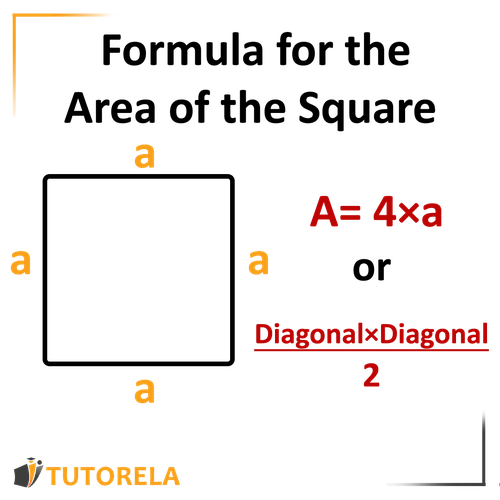
Side of the square
We will multiply the side of the square by itself
Another way:
For more information, enter the link of Area of a square
What is the area of the triangle in the drawing?
Calculate the area of the parallelogram based on the data in the figure:
A parallelogram has a length equal to 6 cm and a height equal to 4.5 cm.
Calculate the area of the parallelogram.
Area of the Rectangle
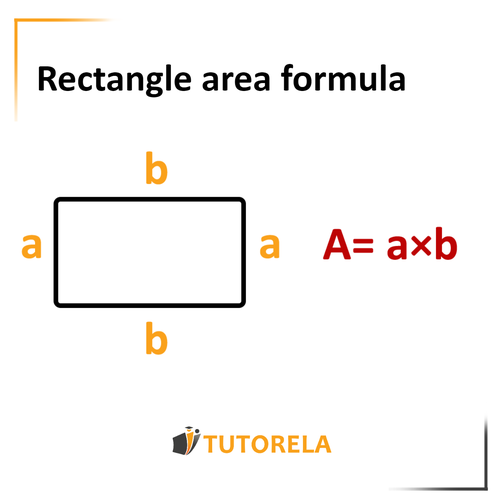
We will multiply one side of the rectangle by the adjacent side (the side with which it forms a degree angle)
For more information, enter the link of Rectangle area
Area of the triangle

We will multiply the height by the corresponding side - that is, the side with which it forms a degree angle and divide the product by .
For more information, enter the link to Triangle Area
Find the area of the parallelogram based on the data in the figure:
Calculate the area of the parallelogram using the data in the figure:
Calculate the area of the parallelogram using the data in the figure:
Area of the Rhombus
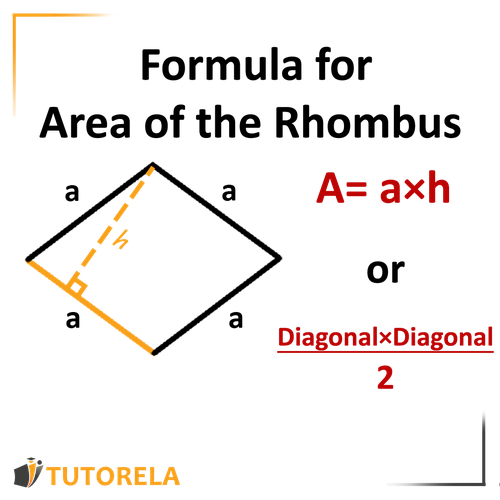
–> Side of the rhombus
–> Height
We will multiply the height by the corresponding side, that is, the side with which it forms a right angle of degrees.
Another way :
For more information, enter the link of Rhombus area
Area of the parallelogram
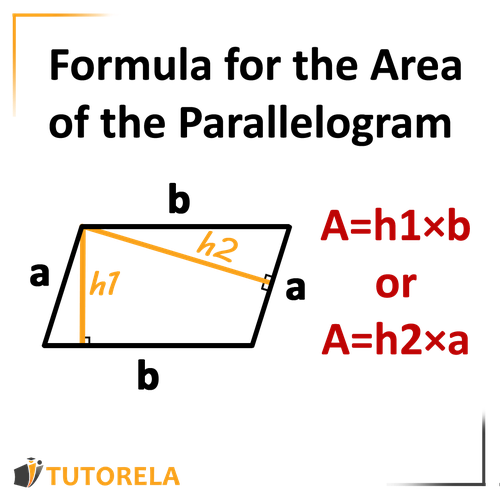
–> Height
–> The side that forms a degree angle with the height .
We will multiply the height by the side to which the height reaches and forms with it a degree angle.
For more information, enter the link of Parallelogram area
Calculate the area of the parallelogram using the data in the figure:
Calculate the area of the parallelogram using the data in the figure:
Calculate the area of the parallelogram using the data in the figure:
Area of the Circle
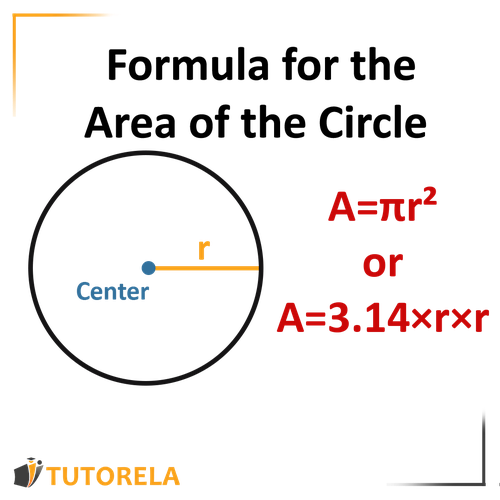
The radius of the circumference
PI
It will be calculated as the number
We will multiply PI by the radius of the circumference squared, that is
Or, more simply, the formula is:
For more information, enter the link of Circle area
Area of the trapezoid
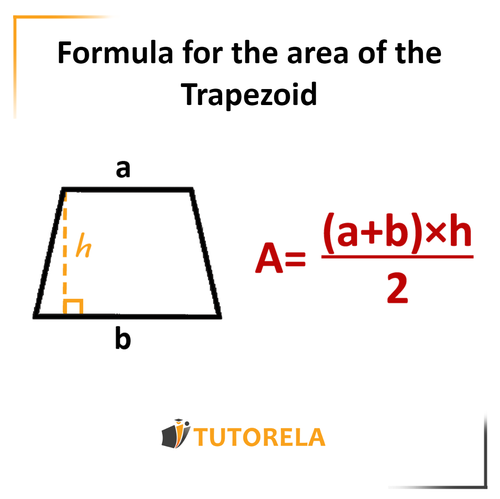
We will add the bases and multiply the result by the height of the trapezoid.
We will divide the result by .
For more information, enter the link of Trapezoid area
The triangle ABC is given below.
AC = 10 cm
AD = 3 cm
BC = 11.6 cm
What is the area of the triangle?
The width of a rectangle is equal to 15 cm and its length is 3 cm.
Calculate the area of the rectangle.
The width of a rectangle is equal to \( 18 \)cm and its length is \( 2~ \)cm.
Calculate the area of the rectangle.
Area of the Kite
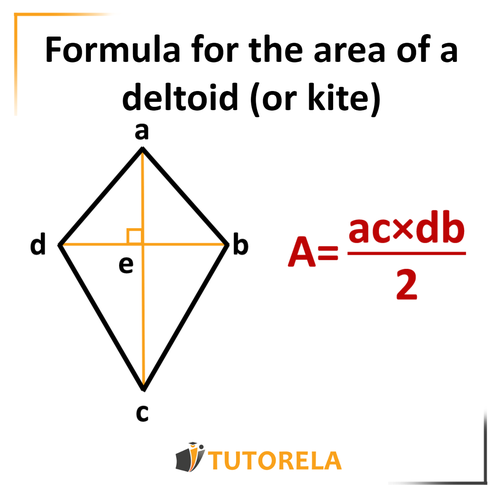
We will multiply the diagonals and divide by .
For more information, enter the link of Area of the kite
Area of Composite Figures
You don't have to worry about this pair of terms - composite figures. They are not called composite because they are complicated or difficult, but rather, they are composite figures because they are really made up of several figures that you already know.
The great key to calculating the area of this type of figures is to separate them into several simple figures on which you know how to calculate their area.
Let's look at an example
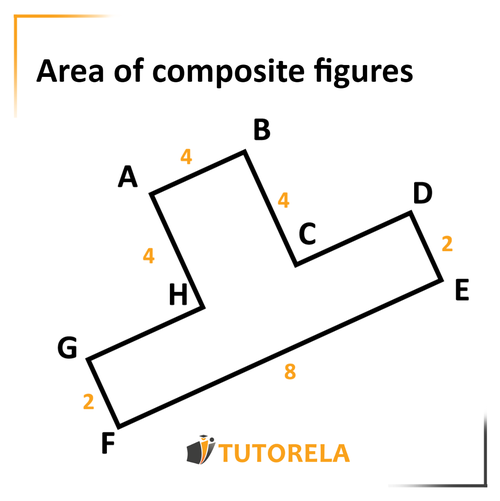
At first glance, it might scare us a bit since the figure seems very strange. But, very quickly we will remember the suggestion that we have written here above and apply it.
We will realize that we can divide the composite figure into two that we know and know how to calculate their area, rectangle and square.
We will calculate the area of each figure separately and then add them together.
In this way, we will obtain the area of the entire figure.
Calculate the area of the trapezoid.
Calculate the area of the trapezoid.
What is the area of the given triangle?
What is the difference between surface area and volume?
To understand the difference, let's remember a daily term we use in another context: superficial.
Superficial implies something or someone without depth, so, in geometry, the surface indicates the size of something flat, without depth. For example, if we draw a ball and paint it, that painted part would be its surface.
On the other hand, volume refers to the actual size of the ball, the space that we could fill inside it.
Volume is not the surface on the sheet of paper, but, really the size we can see (in a three-dimensional way) - the space it occupies in space.
The calculation of volume differs from the calculation of the surface.

Examples and exercises with solutions for area calculation
Exercise #1
What is the area of the given triangle?
Video Solution
Step-by-Step Solution
This question is a bit confusing. We need start by identifying which parts of the data are relevant to us.
Remember the formula for the area of a triangle:
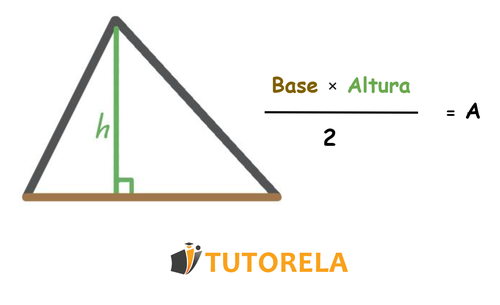 The height is a straight line that comes out of an angle and forms a right angle with the opposite side.
The height is a straight line that comes out of an angle and forms a right angle with the opposite side.
In the drawing we have a height of 6.
It goes down to the opposite side whose length is 5.
And therefore, these are the data points that we will use.
We replace in the formula:
Answer
15
Exercise #2
What is the area of the triangle in the drawing?
Video Solution
Step-by-Step Solution
First, we will identify the data points we need to be able to find the area of the triangle.
the formula for the area of the triangle: height*opposite side / 2
Since it is a right triangle, we know that the straight sides are actually also the heights between each other, that is, the side that measures 5 and the side that measures 7.
We multiply the legs and divide by 2
Answer
17.5
Exercise #3
The triangle ABC is given below.
AC = 10 cm
AD = 3 cm
BC = 11.6 cm
What is the area of the triangle?
Video Solution
Step-by-Step Solution
The triangle we are looking at is the large triangle - ABC
The triangle is formed by three sides AB, BC, and CA.
Now let's remember what we need for the calculation of a triangular area:
(side x the height that descends from the side)/2
Therefore, the first thing we must find is a suitable height and side.
We are given the side AC, but there is no descending height, so it is not useful to us.
The side AB is not given,
And so we are left with the side BC, which is given.
From the side BC descends the height AD (the two form a 90-degree angle).
It can be argued that BC is also a height, but if we delve deeper it seems that CD can be a height in the triangle ADC,
and BD is a height in the triangle ADB (both are the sides of a right triangle, therefore they are the height and the side).
As we do not know if the triangle is isosceles or not, it is also not possible to know if CD=DB, or what their ratio is, and this theory fails.
Let's remember again the formula for triangular area and replace the data we have in the formula:
(side* the height that descends from the side)/2
Now we replace the existing data in this formula:
Answer
17.4
Exercise #4
The width of a rectangle is equal to 15 cm and its length is 3 cm.
Calculate the area of the rectangle.
Video Solution
Step-by-Step Solution
To calculate the area of the rectangle, we multiply the length by the width:
Answer
45
Exercise #5
Calculate the area of the trapezoid.
Video Solution
Step-by-Step Solution
We use the formula (base+base) multiplied by the height and divided by 2.
Note that we are only provided with one base and it is not possible to determine the size of the other base.
Therefore, the area cannot be calculated.
Answer
Cannot be calculated.
What is the area of the triangle in the drawing?
Calculate the area of the parallelogram based on the data in the figure:
A parallelogram has a length equal to 6 cm and a height equal to 4.5 cm.
Calculate the area of the parallelogram.
More Questions
Area of a Rectangle
- Rectangle Area: Solving with Width x and Length x/2 When x=4
- Calculate Rectangle Area: 3² cm Width × 1.5 cm Length
- Calculate Rectangle Area with Dimensions 2x and (2x-8): Variable Expression Problem
- Calculate Rectangle Area: Finding x(x-4) with Variable Dimensions
- Solve for X: Rectangle with Width 8cm and Area 32cm²
Area of a Triangle
- Calculate Triangle Height X: Area 20 and Base 5 Problem
- Right Triangle Area Formula: Complete the Missing Multiplication Terms
- Triangle Area Calculation: Finding Area with Height 7 and Base 8.5
- Right Triangle Area Problem: Solve for X When Area = 6 cm²
- Triangle Area 10 cm²: Finding Base X When Height is 5 Times Greater
Area of a Trapezoid
- Calculate Trapezoid Area: Finding Space Between 5 and 7 Unit Bases
- Trapezoid Problem: Find Side AB Given Area 126 and Height 9
- Solve for X: Trapezoid Area of 12 cm² with Triangle Relationship
- Calculate Trapezoid Area with Bases 9 and 12, Height 5 Units
- Calculate Trapezoid Height: Given Area 30 and Parallel Sides 6 and 9
Area of the Square
- Square Geometry Problem: Comparing Diagonal Sums vs Side Lengths in a 4-Unit Square
- Find Side Length of a Square: Area 25 in Similar Squares Problem
- Calculate Side Length from Square Area: Finding x When Area = 49 cm²
- Calculate the Area: Four x-cm Squares at y-cm Square Vertices
- Calculate the Area of a Square with Side Length 5
Area of a Parallelogram
- Parallelogram Area Calculation: Using Perpendicular Heights BE=4 and BF=8
- Calculate Parallelogram Area: 38cm Perimeter with Proportional Sides
- Calculate Parallelogram Height: Area 24 cm², Perimeter 24 cm with Double-Length Side
- Calculate Parallelogram Area: Using 6-Unit Height and 9-Unit Base with Perpendicular Lines
- Parallelogram Area Calculation: Using Height CE and Segments 5, 7, and 2
Area of a Deltoid
- Calculate the Area of a Deltoid Stage: 30m × 20m Field Problem
- Deltoid Area Problem: Solve for X When Area = 16 cm² and Length = 2×Width
- Deltoid Problem: Solve for 'a' Given Area 6a and Diagonals 2a+2 and a
- Calculate the Area of a Deltoid with Height 7 and Width 4 Units
- Calculating the Area of a Deltoid with Height 5 and Base 6
Area of a Circle
- Circle-Parallelogram Tangency Problem: Finding Area of Blue Regions with 25.13 Circumference
- Calculate Circle Area: Finding Area When Radius = 7
- Calculate Circle Area: Finding the Area When Diameter = 13
- Calculate the Area of a Semicircle with Radius 14 Units
- Area Calculation: 4×8 Rectangle with Four Semicircles
- Area
- Trapezoids
- Symmetry in Trapezoids
- Diagonals of an isosceles trapezoid
- Area of a trapezoid
- Perimeter of a trapezoid
- Types of Trapezoids
- Isosceles Trapezoid
- Parallelogram
- The area of a parallelogram: what is it and how is it calculated?
- Perimeter of a Parallelogram
- Identifying a Parallelogram
- Rotational Symmetry in Parallelograms
- From the Quadrilateral to the Parallelogram
- Kite
- Area of a Deltoid (Kite)
- Congruent Triangles
- Parallel lines
- Angles In Parallel Lines
- Alternate angles
- Corresponding angles
- Collateral angles
- Vertically Opposite Angles
- Adjacent angles
- The Pythagorean Theorem
- Elements of the circumference
- Circle
- Diameter
- Pi
- Area of a circle
- Distance from a chord to the center of a circle
- Chords of a Circle
- Central Angle in a Circle
- Arcs in a Circle
- Perpendicular to a chord from the center of a circle
- Inscribed angle in a circle
- Tangent to a circle
- The Circumference of a Circle
- The Center of a Circle
- Radius
- How is the radius calculated using its circumference?
- Rectangle
- From a Quadrilateral to a Rectangle
- From a Parallelogram to a Rectangle
- Calculating the Area of a Rectangle
- The perimeter of the rectangle
- Congruent Rectangles
- The sides or edges of a triangle
- Similarity of Triangles and Polygons
- Triangle similarity criteria
- Triangle Height
- Midsegment
- Midsegment of a triangle
- Midsegment of a trapezoid
- The Sum of the Interior Angles of a Triangle
- Exterior angles of a triangle
- Relationships Between Angles and Sides of the Triangle
- Relations Between The Sides of a Triangle
- Square
- Area of a square
- From Parallelogram to Square
- Rhombus, kite, or diamond?
- Diagonals of a Rhombus
- Lines of Symmetry in a Rhombus
- From Parallelogram to Rhombus
- The Area of a Rhombus
- Perimeter
- Triangle
- Types of Triangles
- Obtuse Triangle
- Equilateral triangle
- Identification of an Isosceles Triangle
- Scalene triangle
- Acute triangle
- Isosceles triangle
- The Area of a Triangle
- Area of a right triangle
- Area of Isosceles Triangles
- Area of a Scalene Triangle
- Area of Equilateral Triangles
- Perimeter of a triangle
- Cylinder Area
- Cylinder Volume
- Cuboids
- Cubes
- How to calculate the surface area of a rectangular prism (orthohedron)
- How to calculate the volume of a rectangular prism (orthohedron)
- Lateral surface area of a rectangular prism
- Right Triangular Prism
- Bases of the Right Triangular Prism
- The lateral faces of the prism
- Lateral Edges of a Prism
- Height of a Prism
- The volume of the prism
- Surface area of triangular prisms
- Areas of Polygons for 7th Grade
- Right Triangle
- Area of a right-angled trapezoid
- Area of an isosceles trapezoid
- Corresponding exterior angles
- Alternate interior angles
- Median in a triangle
- Center of a Triangle - The Centroid - The Intersection Point of Medians
- How do we calculate the area of complex shapes?
- How to calculate the area of a triangle using trigonometry?
- How do we calculate the perimeter of polygons?
- All terms in triangle calculation
- Parts of a Circle
- Circuit Components
- Diagonals in a rectangle
- Symmetry in a kite









